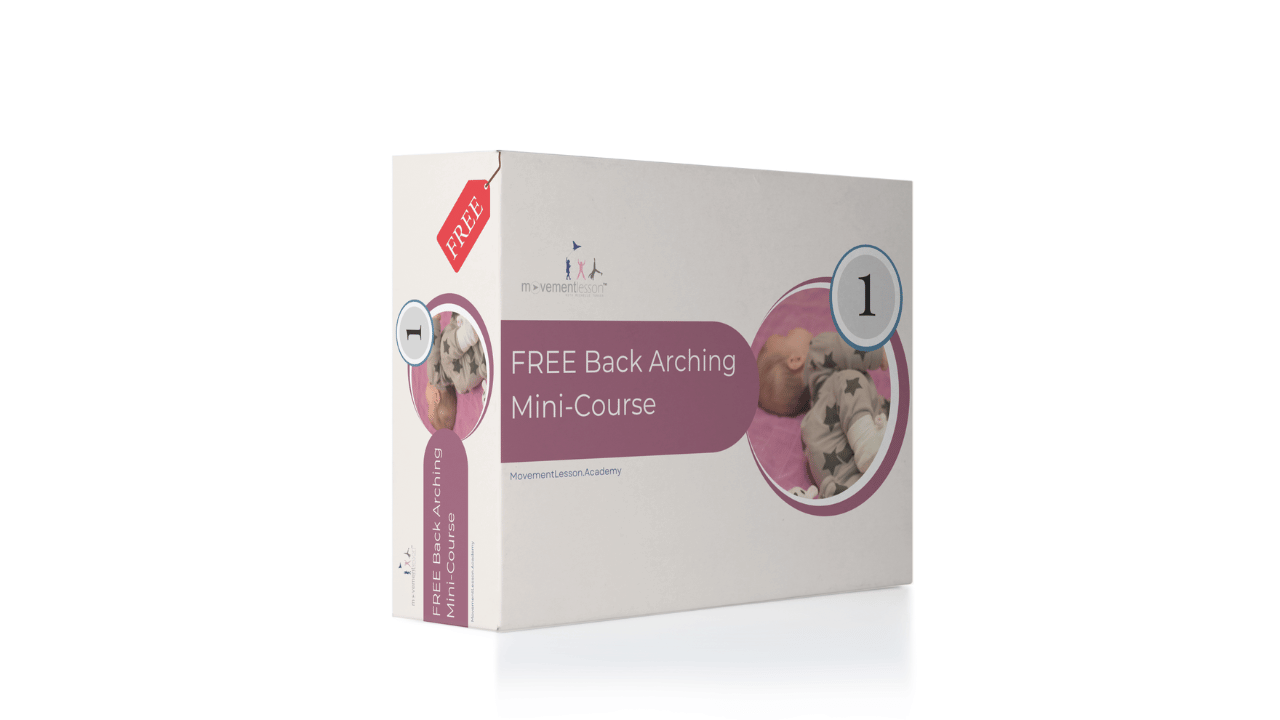7 Causes of Back Arching in Infants and Babies

Back arching in babies is NOT a normal part of their development. It can be a serious early warning sign of atypical development that shows the child's inability of being able to control and coordinate their movements.
Disclaimer: This website is not intended to be a substitute for professional medical advice and should not be relied on as health or personal advice. Always seek the guidance of your doctor or other qualified health professional with any questions you may have regarding your health or a medical condition. Please see disclaimer for additional information about what we are not, click here.
7 Causes of Back Arching in Infants and Babies
1. Torticollis
Torticollis, also known as "wryneck," is a condition in which the neck is twisted and tilted to one side. This can be caused by a variety of factors, including muscle spasms, injuries, or congenital abnormalities.
There are two types of torticollis:
- Congenital torticollis is present at birth, usually caused by a shortened or tightened muscle on one side of the neck called the sternocleidomastoid muscle.
- Acquired torticollis is caused by an injury or other condition that develops after birth, such as muscle strain or nerve damage.
Symptoms of torticollis can include:
- Tilting or twisting of the head to one side
- Limited range of motion of the head and neck
- Flat head on one side
- Unusual positioning of the face
- Uneven shoulders or hips
It's important for parents to be aware of any symptoms of Torticollis and seek medical attention if you notice your baby is developing a head tilt or neck twists. Early detection and treatment can help prevent complications and improve the outcome.
(Worried about your child's development, get our our FREE Back Arching Mini Course NOW - CLICK HERE)
2. Laryngomalacia
Laryngomalacia is a congenital condition that affects the voice box (larynx) in infants. It is caused by a weakness in the structure of the larynx, which causes the soft tissues of the larynx to collapse inward during breathing. This can cause a variety of symptoms, including:
- Stridor: A high-pitched, whistling sound when the child inhales.
- Breathing difficulties, especially when the child is lying down or feeding.
- Apnea: pauses in breathing
- cyanosis (bluish color of the skin due to lack of oxygen)
Laryngomalacia is the most common cause of stridor in infants and is typically diagnosed in the first few months of life. Most children with laryngomalacia have mild symptoms that improve on their own over time as the child grows and the larynx becomes stronger. However, in some cases, treatment may be necessary.
3. Poor Vision
While current medical sciences sees no correlation between poor vision and back arching. In this video, I explain to you exactly why the opposite is true and I have seen over and over again strong correlations of poor vision and back arching in babies.
4. Gastroesophageal reflux
Gastroesophageal reflux (GER) or acid reflux. This is a common condition in which stomach acid flows back into the baby's esophagus, causing discomfort and pain. Babies with GER may arch their back and cry when they are experiencing symptoms.
5. Meningitis
Meningitis, an inflammation of the protective membranes that surround the brain and spinal cord. One of the symptom is stiffness of the neck, which can cause back arching.
(Worried about your child's development, get our our FREE Back Arching Mini Course NOW - CLICK HERE)
6. Infection or Inflammation
An infection or inflammation of the central nervous system. Babies with these conditions may experience stiffness and spasms, which can cause back arching.
7 Neural Tube Defects
Neural tube defects, which are birth defects that affect the brain and spinal cord, can also cause back arching in babies.
It is important to seek medical attention if you notice your baby arching their back excessively, or if it is accompanied by other symptoms such as crying, discomfort or difficulty to feed. A pediatrician or pediatric neurologist can evaluate and diagnose the cause of the back arching, and provide appropriate treatment.
(Worried about your child's development, get our our FREE Back Arching Mini Course NOW - CLICK HERE)

